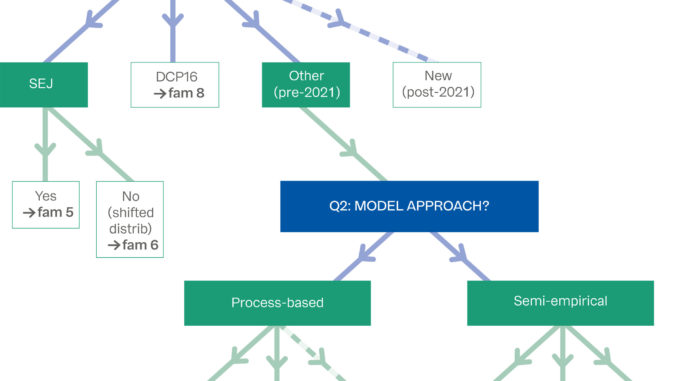
Many global and regional sea-level rise projections have been published recently. As a consequence, it can be difficult to see the differences and to decide which projection to use, for instance for coastal planning.
We therefore present a couple of strategies to help users see the forest for the trees in this large set of projections. First, we make a “family tree” of sea-level rise projections, based on the similarities and differences between projections. This reduces 82 projections to only 8 sea-level families. Next, we show when different sea-level thresholds (0.25 m, 0.5 m, etc.) will be crossed in each of the families. We then combine the information on the families and the timing to define three categories, where each category comes which a recommendation of the type of choices that need to be made for adaptation decision making.
Key points:
- Sea-level projections can be sorted into families, based on similarities in methods and data
- Threshold analysis shows that for certain amounts of sea-level change it is a matter of when, not if
- Combining families and thresholds leads to three categories, each with recommendations for choices to be made, to assist decision makers
Reference: Slangen, A.B.A., Haasnoot, M., Winter, G. Rethinking Sea-Level Projections using Families and Timing Differences. Earth’s future (2022). https://agupubs.onlinelibrary.wiley.com/doi/10.1029/2021EF002576

Leave a Reply